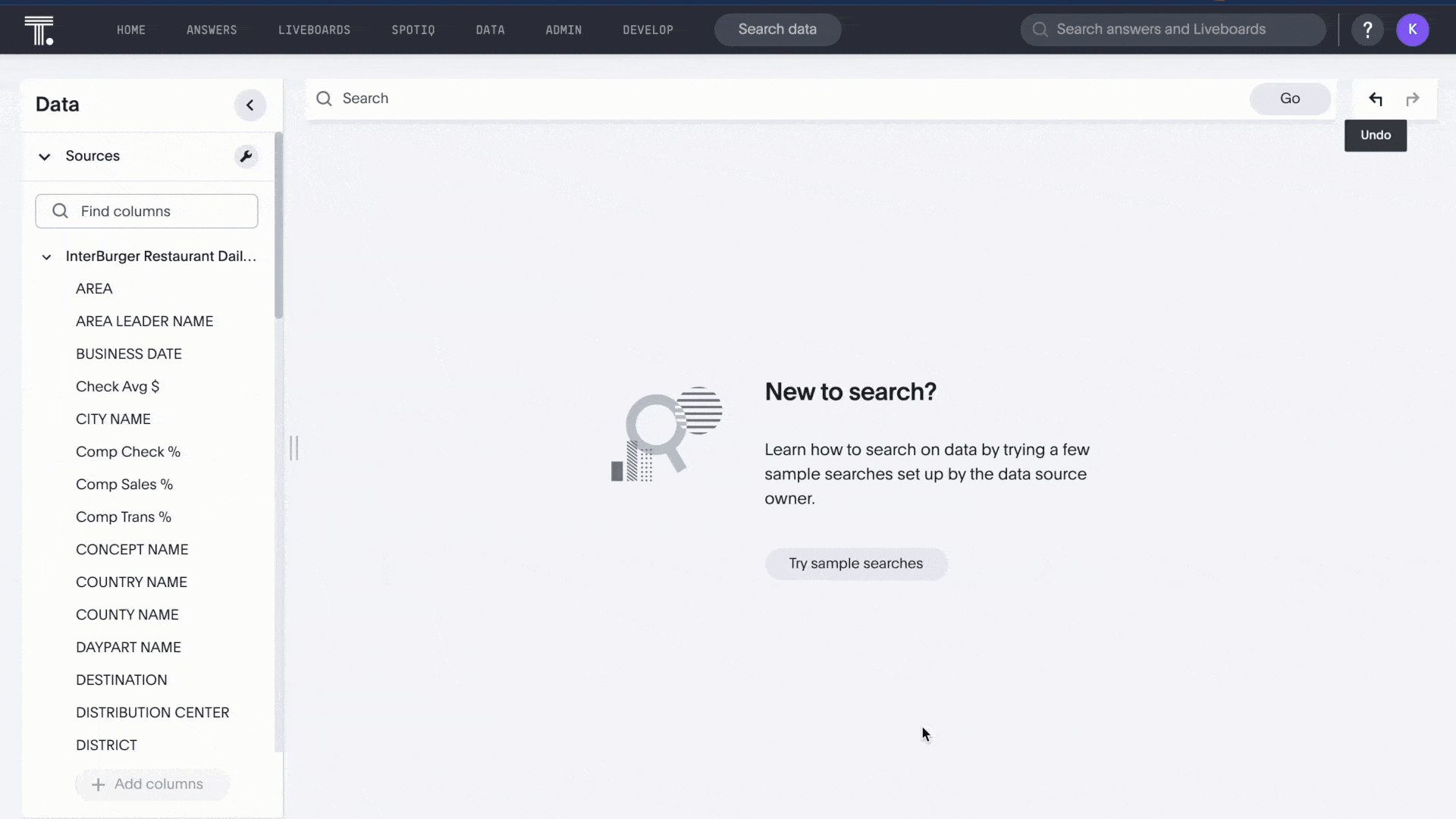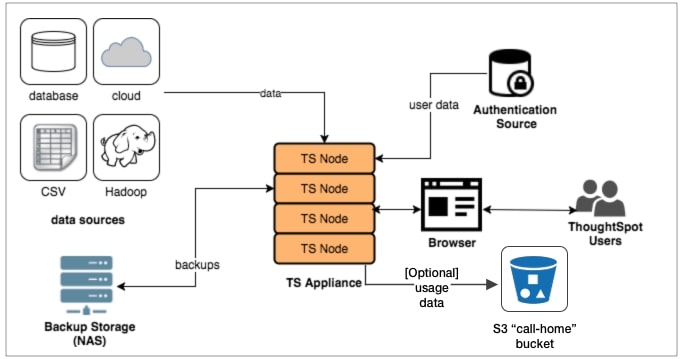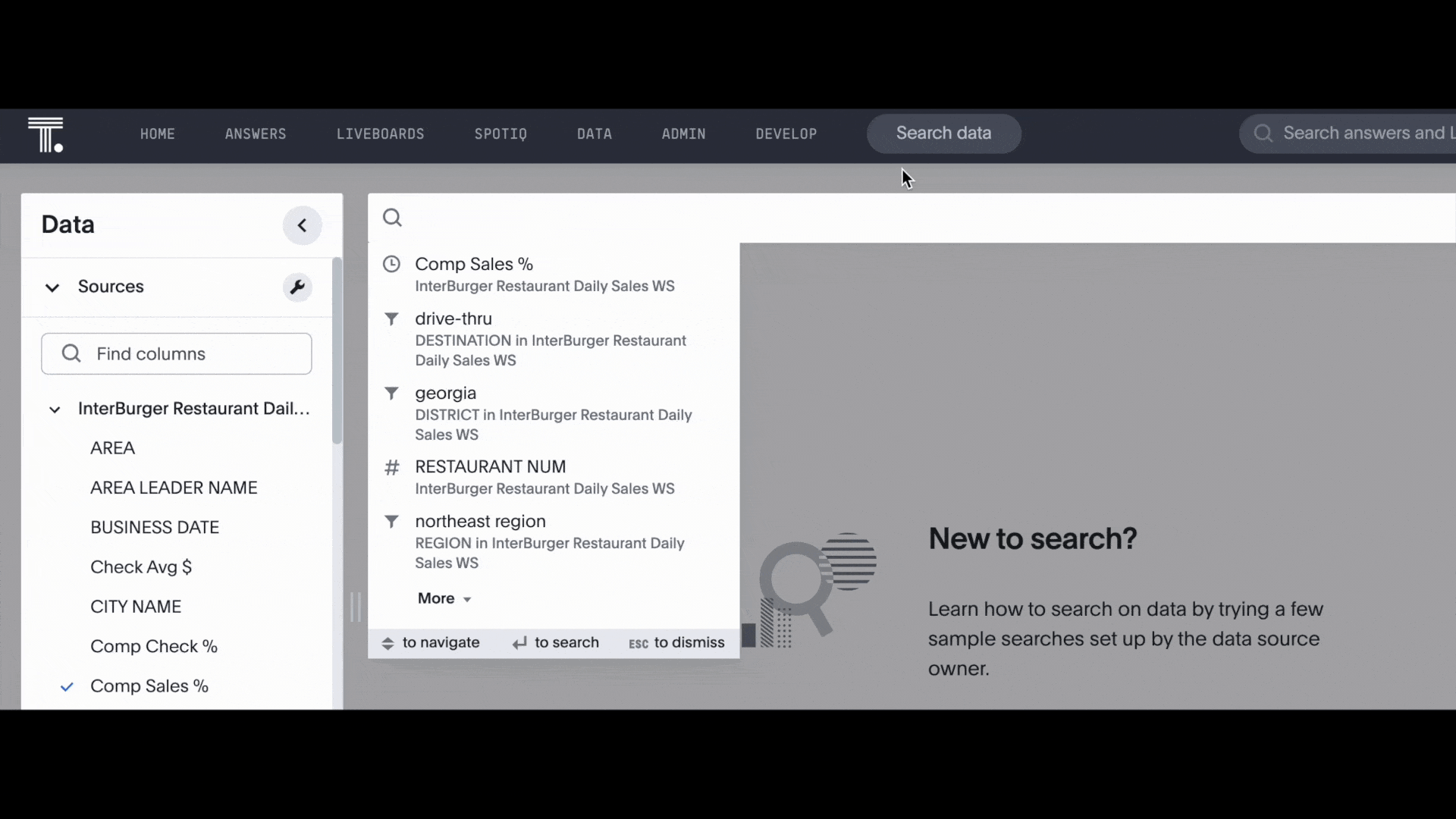This series focuses on our partnership with ThoughtSpot, its valuable data solutions and the value we provide to clients as a team.
In 2021, InterWorks officially entered into a partnership with a new analytics platform called ThoughtSpot. ThoughtSpot is an analytics platform that allows users to search their data very quickly, maximizing the use of the latest cloud data technologies and allowing non-technical users to get answers to their data questions quickly. We, InterWorks, don’t take partnerships with software providers lightly. We only partner with the technologies we know will provide the best solutions for our clients and enhance what we call the modern analytics stack.
Why ThoughtSpot and What Is It?
ThoughtSpot meets a gap that currently exists in the modern visual analytics platforms. That gap is centered around ad hoc analytics and low adoption rates of self-service BI tools industrywide. The usability of ThoughtSpot for non-technical users is quite impressive with very little training. Giving users direct access to data without first providing another tool and then a mechanism for dumping to Excel shortens the time to insight and saves precious BI development hours for other projects the business should spend those on.
At its core, ThoughtSpot is search analytics. What we mean by that is that it allows users to quickly search their data just like they would anything on the internet. Think Google for your data. It really is that easy to use:

ThoughtSpot currently comes in two flavors: on-prem and cloud. The on-prem solution is the original solution developed by ThoughtSpot engineers and requires a high memory infrastructure to operate. It has an incredibly fast database called Falcon where all data and metadata are stored. Live queries to cloud data can still be run using an add-on feature called Embrace for the on-prem solution.
ThoughtSpot Cloud is ThoughtSpot’s latest and preferred SaaS offering for new customers. For the purposes of our blogs on ThoughtSpot, we will be focusing on ThoughtSpot Cloud.
ThoughtSpot has architected their solution in a way that makes searching data, filtering data and sorting data very fast. A short video lesson upon logging in for the first time or working with an existing ThoughtSpot expert will get a user up-to-speed on the basics of ThoughtSpot in minutes. Its architecture is uniquely positioned to execute this well:

Just like Google has set up their infrastructure to make your searches fast yet useful (think about the autocomplete suggestions that populate), ThoughtSpot does the exact same. It learns what data is searched frequently and suggests those searches to users as they work through the interface:

The result is a fast performance and fast results. Think about it: once the cloud data is ready (which can be very quick using a modern cloud data platform like Snowflake), non-technical users can derive insights in minutes rather than weeks waiting for a dashboard to be built.
Why Search?
If you’re accustomed to building things in a tool like Tableau (an InterWorks partner for the last 14+ years), you might be thinking, why? Why do I need this in my life? Think about the average non-technical user. For the sake of this blog, we’ll call our user Alexis, Director of Marketing at InterBurger. Alexis wants to track how well sales of specific products performed last week in Georgia. There was a big online push in Georgia last week, so she wants to find out how effective the marketing effort was.
In traditional modern analytics, we would gather requirements, source the data then start building a dashboard if none existed, or maybe one did exist but didn’t answer her question, so visual work needs to be done. Let’s assume for our story that the data is already in Snowflake, like it would be for a Tableau or PowerBI project. With ThoughtSpot, we need to simply expose this data in the form of a worksheet for her to start searching. We now have something for Alexis in minutes, maybe an hour, rather than days or weeks.
Also, think about Alexis’ story and put yourself in the BI analysts’ place. How often were you on the technical side of Alexis’ request, and it took you two-three weeks to build the thing? Then when you went back to Alexis, she said one of two things:
- “Thanks, but I got my answer from Cameron who gets a weekly export from our marketing partner.”
- “This is nice, but how do you dump it to Excel?”
How does this make you feel? Deflated. Hurt. Maybe even insulted.
Here’s why she just needed an answer: She may not ask this question ever again, or maybe not for another year. There’s no need to spend all those hours building your thing when the data is right there. Enter ThoughtSpot Search.
Couple this fake, but real, example with low adoption rates of visual analytics with non-technical users’ industrywide and you have the recipe for something to disrupt. Again, enter ThoughtSpot search.
ThoughtSpot Search or Tableau’s Ask Data?
If you’re wondering when you might want to use ThoughtSpot search instead of Tableau’s Ask Data, that’s a great question! Ask Data is available in Tableau for those who already own Tableau. In testing, ThoughtSpot’s interface lends itself better for non-technical users. There are far fewer clicks to get to searching in ThoughtSpot than in Ask Data, and it is much easier to find the data you’re looking for in ThoughtSpot. Once a search is completed, ThoughtSpot lends itself to “that next question” and for sharing with others with ease.
In the next blog in this series, we’ll be covering the hierarchy of the ThoughtSpot environment. Until then, let us know what questions you have about search analytics, ThoughtSpot or anything else. We’d love to have a conversation with you!

